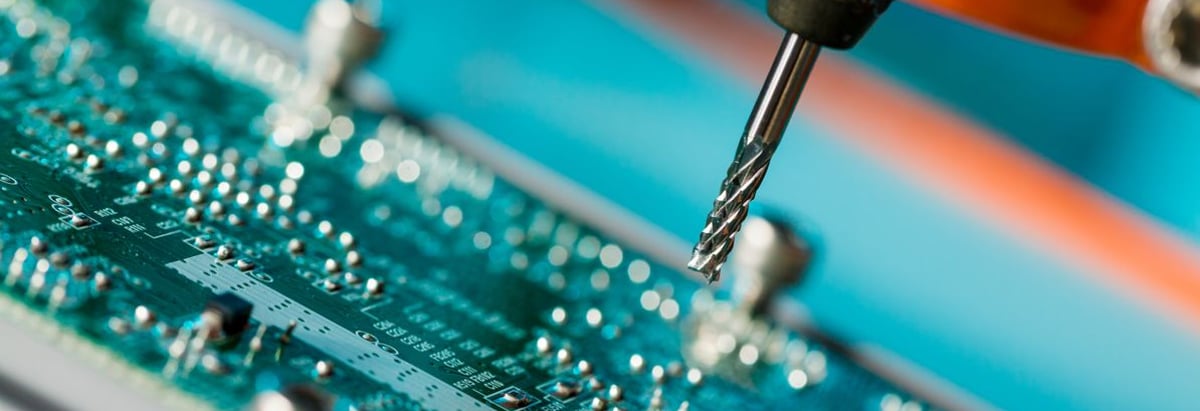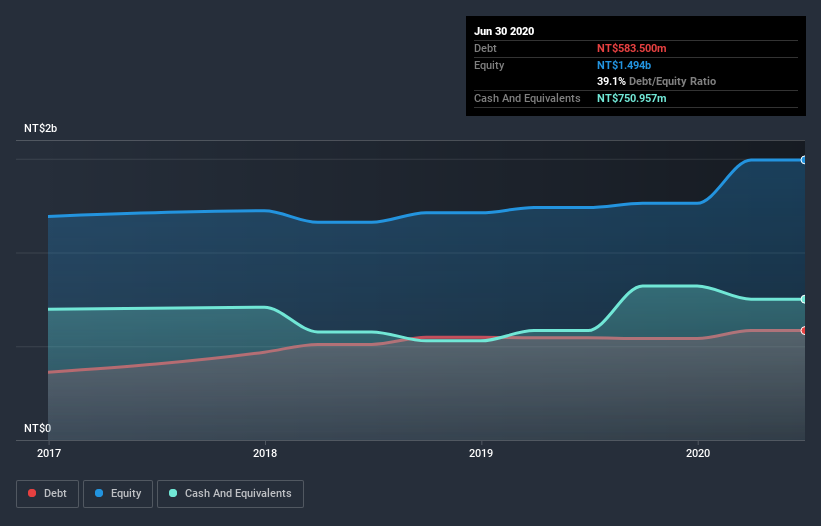KENT Industrial (GTSM:6606) Seems To Use Debt Quite Sensibly

David Iben put it well when he said, 'Volatility is not a risk we care about. What we care about is avoiding the permanent loss of capital.' It's only natural to consider a company's balance sheet when you examine how risky it is, since debt is often involved when a business collapses. We can see that KENT Industrial Co., Ltd (GTSM:6606) does use debt in its business. But is this debt a concern to shareholders?
Why Does Debt Bring Risk?
Debt and other liabilities become risky for a business when it cannot easily fulfill those obligations, either with free cash flow or by raising capital at an attractive price. Part and parcel of capitalism is the process of 'creative destruction' where failed businesses are mercilessly liquidated by their bankers. However, a more common (but still painful) scenario is that it has to raise new equity capital at a low price, thus permanently diluting shareholders. Having said that, the most common situation is where a company manages its debt reasonably well - and to its own advantage. When we think about a company's use of debt, we first look at cash and debt together.
Check out our latest analysis for KENT Industrial
What Is KENT Industrial's Net Debt?
As you can see below, at the end of June 2020, KENT Industrial had NT$583.5m of debt, up from NT$545.4m a year ago. Click the image for more detail. However, its balance sheet shows it holds NT$751.0m in cash, so it actually has NT$167.5m net cash.

How Healthy Is KENT Industrial's Balance Sheet?
Zooming in on the latest balance sheet data, we can see that KENT Industrial had liabilities of NT$891.4m due within 12 months and liabilities of NT$436.0m due beyond that. Offsetting this, it had NT$751.0m in cash and NT$43.6m in receivables that were due within 12 months. So its liabilities total NT$532.8m more than the combination of its cash and short-term receivables.
KENT Industrial has a market capitalization of NT$1.87b, so it could very likely raise cash to ameliorate its balance sheet, if the need arose. But it's clear that we should definitely closely examine whether it can manage its debt without dilution. While it does have liabilities worth noting, KENT Industrial also has more cash than debt, so we're pretty confident it can manage its debt safely.
In fact KENT Industrial's saving grace is its low debt levels, because its EBIT has tanked 80% in the last twelve months. Falling earnings (if the trend continues) could eventually make even modest debt quite risky. The balance sheet is clearly the area to focus on when you are analysing debt. But it is KENT Industrial's earnings that will influence how the balance sheet holds up in the future. So when considering debt, it's definitely worth looking at the earnings trend. Click here for an interactive snapshot.
Finally, a business needs free cash flow to pay off debt; accounting profits just don't cut it. KENT Industrial may have net cash on the balance sheet, but it is still interesting to look at how well the business converts its earnings before interest and tax (EBIT) to free cash flow, because that will influence both its need for, and its capacity to manage debt. Over the last three years, KENT Industrial recorded free cash flow worth a fulsome 88% of its EBIT, which is stronger than we'd usually expect. That puts it in a very strong position to pay down debt.
Summing up
Although KENT Industrial's balance sheet isn't particularly strong, due to the total liabilities, it is clearly positive to see that it has net cash of NT$167.5m. And it impressed us with free cash flow of NT$370m, being 88% of its EBIT. So we are not troubled with KENT Industrial's debt use. The balance sheet is clearly the area to focus on when you are analysing debt. However, not all investment risk resides within the balance sheet - far from it. For instance, we've identified 3 warning signs for KENT Industrial that you should be aware of.
At the end of the day, it's often better to focus on companies that are free from net debt. You can access our special list of such companies (all with a track record of profit growth). It's free.
If you decide to trade KENT Industrial, use the lowest-cost* platform that is rated #1 Overall by Barron’s, Interactive Brokers. Trade stocks, options, futures, forex, bonds and funds on 135 markets, all from a single integrated account. Promoted
Valuation is complex, but we're here to simplify it.
Discover if KENT IndustrialLtd might be undervalued or overvalued with our detailed analysis, featuring fair value estimates, potential risks, dividends, insider trades, and its financial condition.
Access Free AnalysisThis article by Simply Wall St is general in nature. It does not constitute a recommendation to buy or sell any stock, and does not take account of your objectives, or your financial situation. We aim to bring you long-term focused analysis driven by fundamental data. Note that our analysis may not factor in the latest price-sensitive company announcements or qualitative material. Simply Wall St has no position in any stocks mentioned.
*Interactive Brokers Rated Lowest Cost Broker by StockBrokers.com Annual Online Review 2020
Have feedback on this article? Concerned about the content? Get in touch with us directly. Alternatively, email editorial-team (at) simplywallst.com.
About TWSE:6606
KENT IndustrialLtd
Engages in the design, manufacturing, and sale of various precision mechanical work machines, tool steel dies, and other products in Taiwan, Asia, the United States, and internationally.
Flawless balance sheet slight.
Market Insights
Community Narratives



